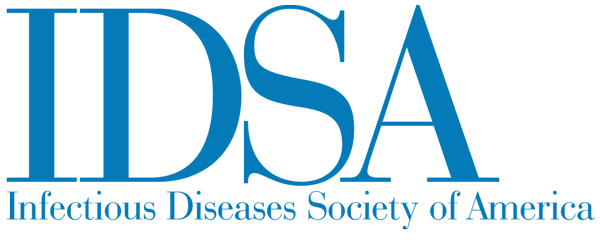COVID-19 Chameleon: Has Kawasaki syndrome been linked to a viral illness all this while?
Facebook Twitter LinkedIn EmailOn Saturday, the World Health Organization released a scientific brief on the multisystem inflammatory syndrome seen in children and adolescents with COVID-19. Today in Science Speaks two guest posts respond to findings around the syndrome.
The following is a guest post by Bertha Serwa Ayi, M.D., FACP, FIDSA, MBA.
During a World Health Organization briefing, last week Dr. Tedros Adhanom Ghebreyesus called on clinicians around the world to be on the alert for the Multisystemic Inflammatory Syndrome in Children and the WHO released this briefing paper on the syndrome the next day. These recognitions of the syndrome came as France reported its first childhood death in a 9-year old boy who tested positive for SARS-Cov-2. He did not have the classical respiratory symptoms. He is the first fatality of France’s 135 cases to date.
We are coming to see that COVID-19’s clinical presentation mimics the of the chameleon, with its camouflage ability allowing it to go unnoticed. Since the COVID-19 outbreak clinicians around the world have been baffled by the many presentations of this illness. The most recent one is the finding of multisystem involvement in children. This multisystem involvement was also well documented in the 1918 influenza pandemic.
In 1967, a year before the H3N2 Flu pandemic that killed 1 million people worldwide, Tomisaku Kawasaki reported an unusual febrile illness involving children older than 5 years characterized by red eyes, beefy red tongues, fever, cardiac involvement, multisystem involvement and lymphadenopathy . Clinically, it looked like an infection, but no pathogen was isolated. In 1976 the condition was also reported in Hawaii. It currently is well established globally, with no known cause, but there are Kawasaki syndrome specialists and centers around the world. This week the Pediatric Unit of the Hospital Papa Giovanni XXIII located in Bergamo Province, the hard hit Italian COVID 19 epicenter reported a 30-fold increase in patients admitted with a Kawasaki-like disorder since Feb. 18, 2020, adding to the previous reports noted below. All their patients showed evidence of infection with SARS-CoV2, the virus responsible for COVID-19 disease. On May 7, The Lancet published the report of an initial 8 cases of a Kawasaki-like illness from children in South East England over a ten day period, instead of the usual 1-to - 2 cases of Kawasaki syndrome a week. This set off a health alert. Many more children have come to medical attention since then. The illness had features suggesting Kawasaki disease, streptococcus or staphylococcus toxic shock syndrome, bacterial sepsis and macrophage activation syndrome, however it was none of these and they initially tested negative for SARS-CoV-2. Four of them had exposure to COVID-19 disease, one tested positive after repeated testing and one would test positive after death. The children presented with complaints of severe abdominal pain, non-bloody diarrhea, vomiting and conjunctivitis while imaging studies showed severe cardiac abnormalities including severe left ventricular dysfunction and elevated cardiac enzymes. The children was mostly Afro-Caribbean in origin. I have since been in meetings where other clinicians have reported a predominance of Asian children. Since this report of eight, many more of children have been found to present in this manner.
At the beginning of the outbreak in China a mission convened by WHO visited the country for 10 days from in mid-February. Their report included data showing that less than 2% of people with COVID-19 were children younger than 18, and that no children had died. In Europe the disease seemed to attack young people. Physicians in New York reported five cases of young people between 33 and 49 years of age who all presented with cerebrovascular accidents, without the usual cardiac risk factors. They all showed evidence of infection with SARS-Co-V-2 without evidence of the classic fever and cough.
This presentation in children is the latest twist in the saga of COVID-19 presentations. This week In the United States physicians in New York reported over 102 cases of children presenting a similar Kawasaki-like illness, with five fatalities. Several of them show evidence of infection with active or recent infection or exposure to SARS-CoV-2. Early recognition is critical for intervention and survival.
On May 14, 2020 the US Centers for Disease Control issued a health alert and a case definition for physicians across the United States to report more of these cases and allow for a formal characterization of this syndrome. A case is any person less than 21 who presents with a fever of more than 380C, and requires hospitalization and shows evidence of inflammation characterized by elevated inflammatory markers like CRP, sedimentation rate, fibrinogen, D- Dimer, LDH, ferritin and interleukin-6. It also includes evidence of neurological changes and involvement of the respiratory system, cardiovascular system, gastrointestinal system, renal system, hematological system, skin manifestations and inflammation of the conjunctiva. The cases should also have a positive SARS-Co-V2 test as measured by RT-PCR, antibody test, or at least exposure to a known COVID-19 case in the four weeks prior to this illness. There must be no other reason such as a bacterial infection to support the clinical findings.
This association between the syndrome known as multisystem inflammatory syndrome and children (MSI-C) or pediatric systemic inflammatory syndrome (PSIS) raises an importance question as to whether Kawasaki syndrome has been due to a specific infectious agent or agents all these years. Two factors -seasonality of Kawasaki disease in the winter season as well as the fact that it occurs in outbreaks involving specific locations- make it very possible that we may have been dealing with a viral illness all along. In that regard, the COVID-19 pandemic may have provided an important window to evaluate this idiopathic illness and many other idiopathic illnesses especially the myriad of rheumatologic, dermatologic, and neurological disorders.
Of particular interest are idiopathic neurological diseases like multiple sclerosis, Parkinson's disease, dementia, amyotrophic lateral sclerosis, and certain cerebrovascular accidents. Could they have been due to post inflammatory reactions to viral infections? These questions came up after the SARS outbreak of 2003 when a physician in China died of a strange neurological illness after an initial improvement in his original presentation with a respiratory illness and his autopsy showed evidence of Viral RNA and RNA polymerase. The virus was also isolated in the neural tissue of a patient with multiple sclerosis. It is possible that conditions like the findings of bilateral intracranial thromboembolic disease in a 94 year old patient was hospitalized for three weeks with COVID-19 infection and was successfully extubated was related to the inflammation related to the virus?
Now that we know COVID-19 varies in its expression should the case definition of this pediatric illness expand to include milder illness of multisystem involvement? This clinical presentations of this disease has been a moving target, the criteria for testing has moved from fever and cough to mental status changes. There have been reports of Guillain-Barre syndrome, acute necrotizing encephalitis, Miller Fisher Syndrome and polyneuritis cranialis.
Is it even possible that the myriad autoimmune inflammatory syndromes like systemic erythematosus, rheumatoid arthritis and systemic onset juvenile idiopathic arthritis could be related to viral illnesses? Tociluzumab an agent used for treatment of rheumatoid arthritis has been used to manage the cytokine storm of COVID-19 disease. It is of interest that Macrophage Activation Syndrome (MAS), a condition in which mature macrophage cells pretty much eat up the hematopoietic cell lines is very common in juvenile idiopathic arthritis and it also happens to be one of the clinical pictures evident in this multisystem disorder. It presents quite dramatically in multiple conditions such as infections, cancers, rheumatologic disorders and hematological disorders.
The chameleon has opened a whole new can of worms with this pediatric illness and the role of immune modulators in therapy. We have to get to work.
Bertha Serwa Ayi, MD, FACP, FIDSA, MBA, is an adjunct Assistant Professor of Medicine at the Kansas Health Sciences Center, USA and an adjunct lecturer at the University of Development Studies, Ghana. She is a graduate of the University Of Ghana Medical School (UGMS Class of 1996) where she graduated with honors and received the Alcon/Paracelsus Award in Ophthalmology. She completed her Internal Medicine Residency training at Good Samaritan Hospital Inc., affiliated with Johns Hopkins University School of Medicine in Baltimore Maryland in 2002. Furthermore, In 2004, she completed fellowship training in Infectious Diseases at a combined training program at Creighton University Medical Center, University of Nebraska Medical Center and the Veterans Administration Hospital in Omaha, Nebraska. She is a Board Certified Infectious Disease Specialist and a fellow of the American College of Physicians (FACP) and the Infectious Disease Society of America, which produces this blog. Dr. Ayi is an adjunct lecturer at the University of Allied Health Sciences, in Ghana, She is in private practice.


